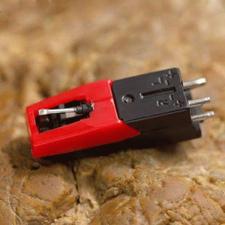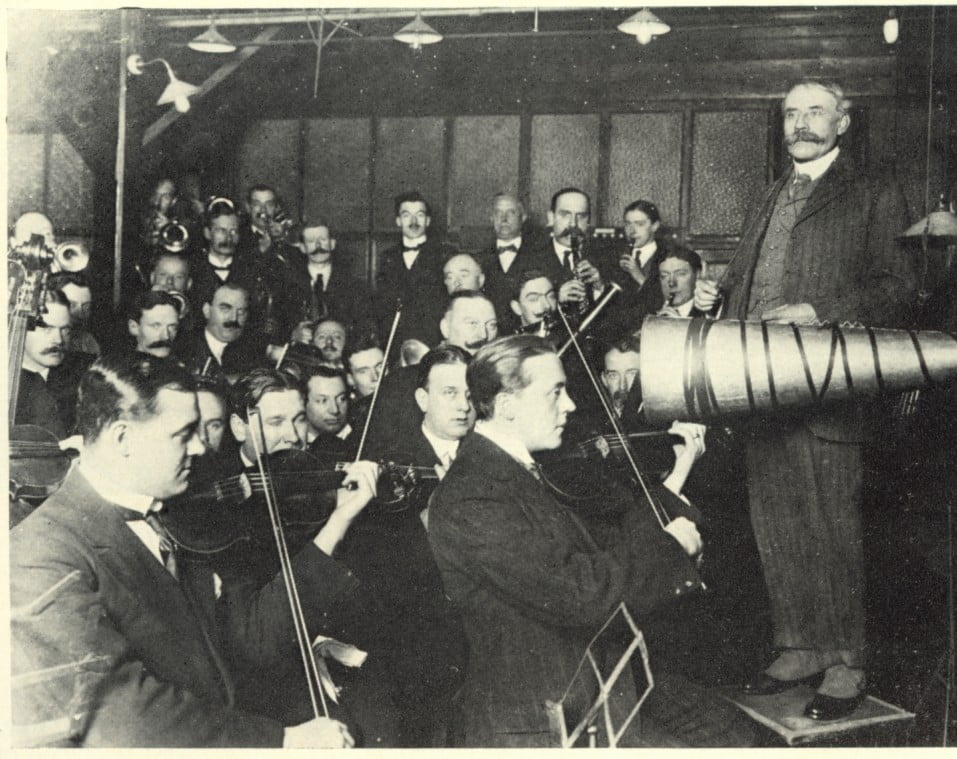It’s the time of year for saving money!
In Part 4 of this series, I wrote about, among other things, how the record industry’s desire to increase the amount of recording time on each phonograph record led to not just longer-playing records, but better sound and longer life for both the records and the styli used for playing them.
 Some increase in playing time had been brought about just by making the disc physically bigger – 12 inches in diameter, rather than the 10 inches usd for 78 rpm recordings. More came from switching from 78 rpm to the 33 1/3 rpm speed that had been standard for the old 16 inch “transcription” discs used by the radio networks for transporting programming to their member and affiliated stations.
Some increase in playing time had been brought about just by making the disc physically bigger – 12 inches in diameter, rather than the 10 inches usd for 78 rpm recordings. More came from switching from 78 rpm to the 33 1/3 rpm speed that had been standard for the old 16 inch “transcription” discs used by the radio networks for transporting programming to their member and affiliated stations.
The thing, though, that finally made the industry’s goal achievable was simply making the groove longer (the longer the groove, the longer the playing time at any speed), and that was done just by making the groove narrower and putting its spirals closer together so that the longest possible groove could fit into the space available for it..
Narrower grooves required smaller styli to track them, and that meant huge increases in effective tracking force (See the calculation in Part 3 of this series) which, in turn, required either a substantial reduction in stylus tracking weight (down from an ounce or more to just a very few grams); a new material (vinyl, instead of shellac) to make the records out of; or, as turned out to be the case, both.
 Achieving the industry’s longer playing-time goal brought with it a whole broad range of other benefits: Vinyl records had far less inherent “surface noise”, and tracking them at less force both contributed to that and reduced record and stylus wear too. All of those things combined to make the magnetic cartridge, even with its lower output and need for extra gain and equalization in its associated playback electronics, ubiquitous for all but the very cheapest record players. And there were sonic benefits, as well: The greatly improved physical compliance necessary to track at the new lower pressures made for better high frequency response; a much improved sense of musical realism, ;and a spur to the new quest for “high fidelity” sound led by Avery Fisher, H.H. Scott, and others. Interestingly, it also, brought about, perhaps in hopes of staying competitive, a major redesign of crystal and ceramic cartridges to make them more suitable for LP playback. That worked well enough that the very first commercially available stereo phono cartridge (still, almost immediately supplanted by magnetic models from other manufacturers) was a ceramic model by Electro-Voice. (I bought one, back then, along with a copy of the very first stereo LP The Dukes of Dixieland, Volume 2 on the Audio Fidelity label, and both sounded surprisingly good.)
Achieving the industry’s longer playing-time goal brought with it a whole broad range of other benefits: Vinyl records had far less inherent “surface noise”, and tracking them at less force both contributed to that and reduced record and stylus wear too. All of those things combined to make the magnetic cartridge, even with its lower output and need for extra gain and equalization in its associated playback electronics, ubiquitous for all but the very cheapest record players. And there were sonic benefits, as well: The greatly improved physical compliance necessary to track at the new lower pressures made for better high frequency response; a much improved sense of musical realism, ;and a spur to the new quest for “high fidelity” sound led by Avery Fisher, H.H. Scott, and others. Interestingly, it also, brought about, perhaps in hopes of staying competitive, a major redesign of crystal and ceramic cartridges to make them more suitable for LP playback. That worked well enough that the very first commercially available stereo phono cartridge (still, almost immediately supplanted by magnetic models from other manufacturers) was a ceramic model by Electro-Voice. (I bought one, back then, along with a copy of the very first stereo LP The Dukes of Dixieland, Volume 2 on the Audio Fidelity label, and both sounded surprisingly good.)
Even with its overwhelming market and musical success, the magnetic cartridge still had concerns about tracking force, which led to the improvements in stylus shape that I wrote about last time. It also brought with it concerns for a totally new kind of problem: cantilever flex.
 The old crystal and ceramic cartridges were truly simple devices, consisting essentially of just a piece of piezoelectric material with a lever (the “needle”) attached to it in such a way that if the needle were to move (as in response to the modulations of a record groove), it would bend or compress the piezo material and produce a voltage – the greater the movement, the greater the output, with the total degree of movement always identical to the total “swing” of the groove.
The old crystal and ceramic cartridges were truly simple devices, consisting essentially of just a piece of piezoelectric material with a lever (the “needle”) attached to it in such a way that if the needle were to move (as in response to the modulations of a record groove), it would bend or compress the piezo material and produce a voltage – the greater the movement, the greater the output, with the total degree of movement always identical to the total “swing” of the groove.
Magnetic cartridges, because of their much lower output, tend to be designed differently ― with the stylus and part of the generating system mounted to a “cantilever” which allows the designer to use mechanical advantage to increase the effective movement of the cartridge’s generator elements and thereby increase its output.
Almost every magnetic cartridge has a cantilever that supports its stylus and some other part (either the magnet, the “iron”, or the coils) of its generating system. This cantilever must always be free at the stylus-end and must always have something, either at the other end (the “generator-end”) or somewhere between the cantilever’s two ends to function as a pivot or fulcrum and allow for movement in response to the modulations of the recorded groove.
Only two cartridge designs that I know of (the London-Decca and the Ikeda) have no cantilever as the mount for their stylus. Both are very low output designs, and it’s likely that a significant factor in their low output is that lack of a cantilever.

I said, before, that with piezo cartridges, the more movement of the needle there is, the greater the output will be. That’s because the greater stylus movement causes greater deflection of the piezo element, and it’s that deflection (bending) that creates the cartridge’s electrical output. With magnetic cartridges, what creates the output is the breaking of lines of force from and surrounding the cartridge’s magnet and the more lines of force are broken, the greater the output will be. As with the bending of the piezo element, the breaking of lines of force is caused by movement – the movement of the stylus in following the groove – and the cantilever can be significant in determining how much movement there will actually be:
Obviously, the stylus, in following the groove, can only move exactly as much as the groove, itself, does – anything more or less would have the stylus outside the groove, moving uncontrolled. If, thoug, the stylus is set at one end of a Class 1 lever (the kind that has the force [the stylus] at one end; the load [the moving coil, moving magnet, or moving iron – “the generator” end] at the other; and the fulcrum [a pivot] between the two), and if (keeping the overall length of the lever the same), the fulcrum were to be moved closer-to or farther-from the load, that would change the mechanical advantage and allow for swapping greater force or movement at one end for lesser force or movement at the other end, and vice versa. Doing this, with the stylus-end short, and the generator-end long, will result – even with the amount of groove-swing staying the same — in more movement at the generator-end, which will result in more broken force-lines, and greater output from the cartridge. This is what many cartridge designers do, and the lack of it because of no cantilever could be one reason for the low output of the London-Decca and Ikeda cartridges.
There’s a problem, though, — two, in fact — with the cantilever, itself: The first is that, in the entire world, there’s nothing that’s ABSOLUTELY rigid. Everything can flex to some degree, given the application of the right amount of the right kind of force. And that’s – for phono cartridges – not just a physical problem, but a musical one: If the stylus and the generator are located at opposites ends of a “seesaw (a Class 1 lever) and the seesaw (the cantilever) can bend in any way, to any degree the movements at the two ends will not be identical and the results (if anything than a leverage-induced difference in scale of movement), will be distortion and a loss of fidelity to both the original sound and what’s on the record.
Many things have been tried to counter this. I’ll tell you about some of them next time.
See you then!








